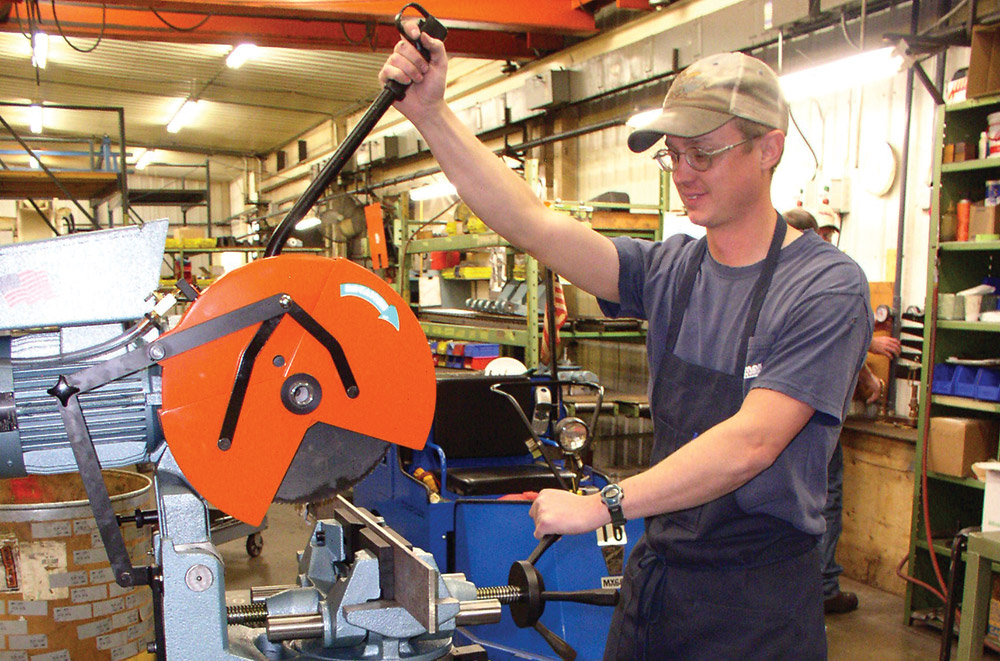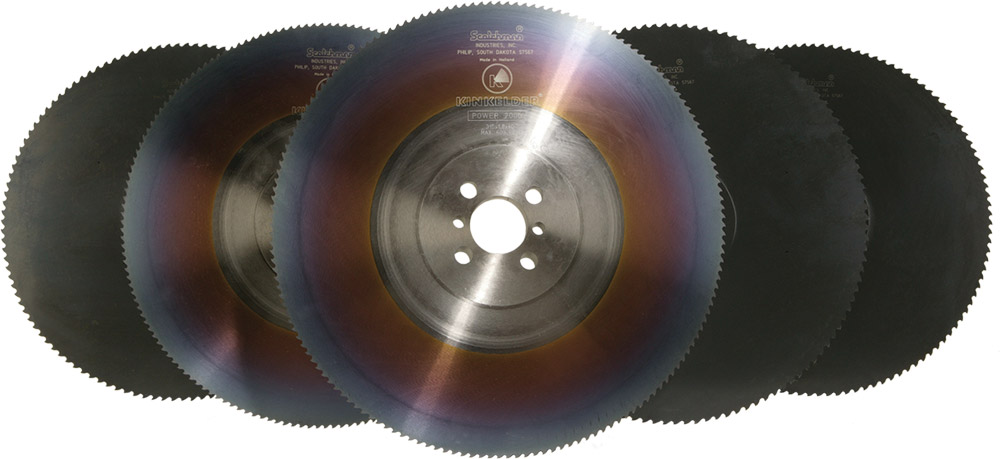February 2018 - There are no general-purpose or universal cold saw blades, so it’s important to choose one that’s suitable for the material being cut. If a fine-tooth blade is used on solid material, for instance, the chip load (a measurement of the thickness of material removed by each cutting edge during a cut) will build up, resulting in a poor cut and overheating.
Most cold saw blades are made out of M2 high-speed steel due to its abrasion resistance and hardness. The blades commonly are coated with a steam oxide or black oxide, which helps them hold their edges and prevents galling as the blade passes through the material. The coating also has tiny dips and craters that help carry coolant into the cut. For extended wear resistance, blades can be coated with more exotic substances, such as titanium nitride.
How to choose a blade
Thin, thick, strong and hollow materials each require different types of blades. To determine which blade is right for your application, evaluate tooth geometry, pitch and bevel.

Pitch is the size of one saw blade tooth or the distance from one tip to the next in millimeters. A blade with more teeth has a smaller pitch, and one with fewer teeth has a larger pitch. Solid materials need to be cut at a slower rpm with three to five teeth making contact with the material. For hollow materials like tubing, the wall thickness determines the cut speed and pitch. Thick-walled tube should be processed at a slower rpm and the pitch should be smaller than the wall thickness, and thin-walled tube should be cut at a higher rpm and the pitch should be as small as possible.
Beyond pitch, cold saw blades have teeth with various types of bevels or notches—including alternate, triple chip, notch grind and round grind. Triple chip and alternate grinds are the most common.
Change blades correctly
It’s important to develop a specific procedure to follow each time a blade is changed to ensure correctness and consistency. A saw blade is driven by the pins in the flange. When changing blades, the backlash must be removed, which is simple to do. After putting the blade on the machine, but before tightening the bolt on the flange, lift up on the front of the blade and hold it there until the bolt is tight. This keeps the pin-holes in and the blade against the pins in the flange. If a blade breaks through a pin-hole, it is because the backlash was not removed.
If metal chips are allowed to fall in between the flange and saw spindle, the flange becomes dirty, which will cause the blade to wobble during cutting. Dirty flanges can contribute to other problems as well, including pickup. Pickup occurs when the material being cut has bonded to both sides of a saw blade tooth, making it wider or thicker than the blade is supposed to be. Each time the thicker tooth passes through the material, it will grab the material and cause the saw head to jump.
Pickup worsens each time that tooth passes through the material until, finally, the amount of material collected will jam the blade in the material and either rip a chunk out of the blade or break the blade into pieces. Pickup is caused by dirty flanges, dull blades, weak coolant, the wrong coolant, use of the wrong blade, or running the blade at the wrong speed.

It can be felt by dragging your fingernail over the side of the tooth. If you feel pickup on the blade, stop using it or you risk a broken blade. The best way to eliminate pickup is to resharpen the blade.
Extending life
To prolong the life of saw blades, first and foremost, shop workers should read the operator’s manual for your cold saw, which contains important safety tips and maintenance information. Then, when mounting a new or resharpened blade, be mindful of the extremely sharp edges and feed it slowly through the material for the first three or four cuts. Also, use good coolant mixed to the proper strength.
Cold saw blades can be resharpened; however, the diameter of the blade is reduced with every sharpening because a small amount of material is ground from the rim each time. Blades can be resharpened several times (30 to 40 times under optimal conditions) or until they are too narrow to use.
Jason Schofield, Engineering, Scotchman Industries Inc.
Scotchman Industries
Philip, South Dakota
800/843-8844

